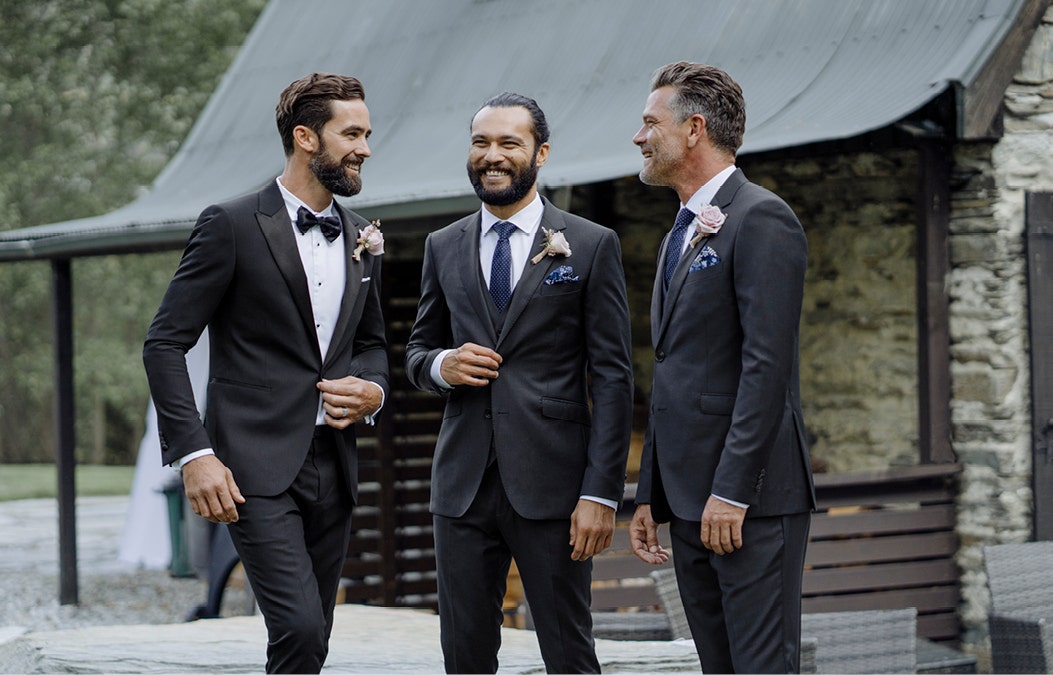Think suits and tuxedos are interchangeable? Think again. Although both are technically suits and worn to formal events, there’s some distinct differences between a suit and a tuxedo.
First things first, what actually is a tux?
You’ve seen one on James Bond - that impeccably cut black suit with satin lapels, a crisp white shirt and a black bow-tie. The effect is sharp and suave. Tuxedos are generally only worn to black tie events, and they’re far more formal than a basic suit. Although they look relatively simple, there are a great deal of hidden details and rules that define a tuxedo.
The tuxedo jacket (also called a “dinner jacket”) is a single breasted ventless jacket made from fine woo, featuring silk lapels in the style of a shawl collar or peaked lapels. Buttons (there should only be one at the front, maybe two at the very most) are traditionally fabric covered. Pockets should be in the jet style - it’s far more elegant and formal. Jacket sleeves should end at the wrist bone, with the shirt cuff extending an inch below.
A “formal” or “tuxedo” shirt features a bibbed front, usually finely pleated, with a turn down collar and french cuffs - fastened with cufflinks. The front of a tuxedo shirt is sometimes even ruffled - this is obviously quite a retro look, and harder to pull off (but give it a go if your dare).
Traditionally trousers would be trimmed with a silk braid down the side that matches the jacket’s lapels. Tuxedo trousers never have turn up cuffs. They also don’t have belt loops, instead being held up with suspenders that are hidden by a waistcoat. Wearing a belt with is a tux is a big no no.
Tuxedos should always be worn with a black bow-tie (self tying of course). If you’re feeling particularly traditional, you could also wear either a low-cut formal waistcoat or a cummerbund (with the pleats facing up). Both of these however should not be worn with a double breasted dinner jacket, as the latter would never be worn unbuttoned. A pocket square, always in white, and a flower in the jacket’s button hole provide a striking finishing touch. Also, it goes without saying, wear black socks. Shoes should be highly polished (or even patent) leather oxfords or formal slip-ons.
So how is a suit different?
While a tuxedo is formal and controlled by traditional rules of dress, a classic suit on the other hand tends to be more relaxed - with much more room for creativity with colour, texture and pattern. Unlike the tuxedo’s place at black tie events only, you’ll wear a suit to the office, a nice party or a wedding.
A suit jacket usually features a single or double vent and flap pockets, with two or three buttons. Unlike a tuxedo, the jackets lapels are made from the same fabric as the rest of the jacket. A suit jacket has a peaked or notched lapel. Trousers will be in the same fabric as the jacket, and lack the silk braid of a tuxedo pant. They also usually feature belt loops, meaning a belt can be worn - but always match it with your footwear. Suits are generally worn with a tie rather than a bow tie (although nothing is stopping you from trying out the latter).

